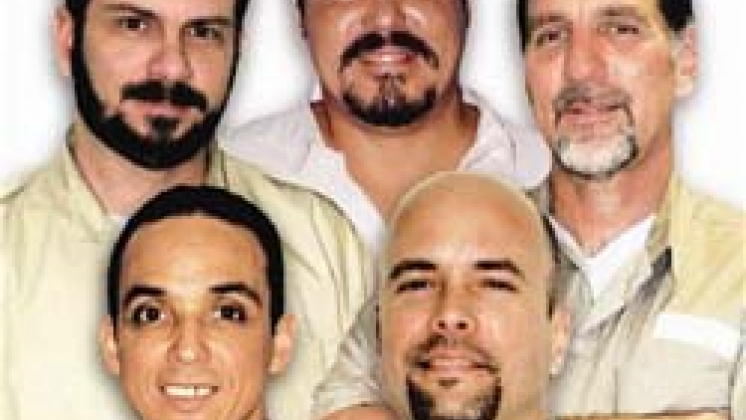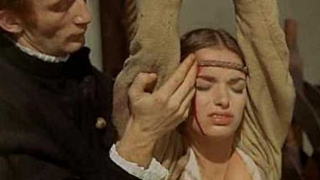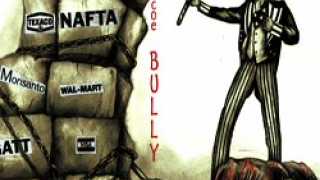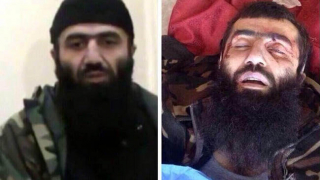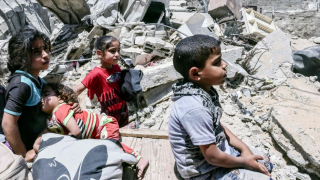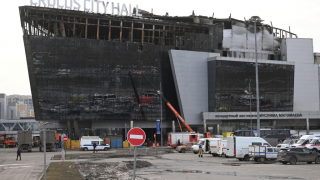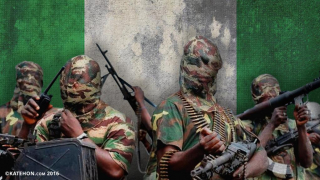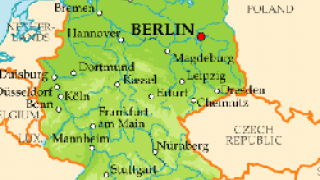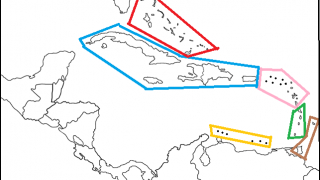An Appeal for Justice: the case of the Cuban 5
For half a century Cuba has been a victim of U.S. aggressions and terrorist actions. During all that time, 5,577 Cubans have either lost their lives or have been left maimed. U.S. official declassified documents show that between October 1960 and April 1961 the CIA smuggled 75 tons of explosives into Cuba during 30 clandestine air operations, and infiltrated 45 tons of weapons and explosives during 31 sea incursions. Also during that short seven-month time span, the CIA carried out 110 attacks with dynamite, planted 200 bombs, derailed six trains and burned 150 factories and 800 plantations.
Between 1959 and 1997 the United States carried out 5,780 terrorist actions against Cuba – 804 of them considered terrorist attacks of significant magnitude, including 78 bombings against the civilian population.
Between 1959 and 2003 there were 61 hijackings of planes or boats. Between 1961 and 1996 there were 58 attacks from the sea against 67 economic targets and the population.
In 1971, after a biological attack, half a million pigs had to be killed to prevent the spreading of swine fever. In 1981 the introduction of dengue fever caused 344,203 victims killing 158 of whom 101 were children. On July 6th, 1982, 11,400 cases were registered in one day alone.
The CIA has directed and supported over 4,000 individuals in 299 paramilitary groups. They are responsible for 549 murders and thousands of people wounded.
Most of these aggressions were planned in and executed from Florida by CIA-trained extreme right-wing groups of Cuban origin.
Luis Posada Carriles, considered by the FBI as “the worst terrorist of the hemisphere,” enjoys total impunity and currently lives free in Miami. He is responsible for many terrorist attacks, including the blowing up in mid-air of a Cuban civilian airline in 1976, with 73 people on board. All 48 passengers and 25 crew aboard the plane died: 57 Cubans, 11 Guyanese, and five North Koreans. Among the dead were all 24 members of the 1975 national Cuban Fencing team that had just won all the gold medals in the Central American and Caribbean Championship. Many were teenagers.
Thirty-seven years later, the families of the victims of that atrocious crime, known as the Barbados crime, are still asking for justice. Venezuela continues demanding Posada Carriles’ extradition because he escaped from a Venezuela prison while awaiting trial. Despite all evidence against Posada Carriles, and in flagrant violation of international law, past administrations and now the Obama administration have continued to provide safe haven for this dangerous international terrorist.
Orlando Bosch, another notorious terrorist, and an accomplice with Posada Carriles of the Barbados crime of 1976, is also responsible for dozens of terrorist attacks. On June 23, 1989, the U.S. Justice Department stated in a report that Bosch’s presence in the United States was inadmissible. Shortly afterwards, after he was condemned for having committed terrorist actions, Bosch was granted an amnesty by Bush Sr.
Immediately after the breakup of the Soviet Union, Cuba entered an extremely severe economic crisis, worse than the Great Depression of 1929 in the U.S. It was precisely the time chosen by the U.S. to strengthen its economic blockade, as reflected in the Torricelli Amendment (1992) and the Helms-Burton Act (1996). The trio – Torricelli, Helms and Burton– replying to those objecting to the illegal extraterritorial legislations, assured their colleagues that it was the last year of the government led by Fidel Castro.
Paradoxically, in September 1994 and May 1995 (under the Clinton administration), Cuba and the U.S. succeeded in negotiating new migration accords in an exercise of quiet private diplomacy that involved the commitment to move towards the lifting of the embargo and a promise to curb terrorist actions against Cuba. Right-wing groups in the Cuban exile community in Miami were not happy with the new developments.
Some, unsatisfied with what they perceived as Washington’s insufficient aggressiveness, tried to make a final assault on the island nation.
It was then that José Basulto from Brothers to the Rescue and his cohorts ramped up their airborne incursions. Basulto was very open in explaining his intentions. The alleged “humanitarian” nature of their previous flights – to help undocumented Cubans to enter the U.S. – had disappeared with the new U.S. policy, since May 2, 1995, to send Cubans back to the island. From that day on, as recognized by Basulto, the flights would continue and be multiplied with a subversive purpose. Almost daily he was in the media announcing the next provocation and proclaiming that Cuba was so weakened by the economic crisis that it could not protect its borders or even impede him from flying over downtown Havana, as he did on more than one occasion. Between May 1995 and February 1996 at least 25 illegal incursions over Cuba aerospace coming from Miami were registered; the U.S. authorities were well aware of these violations of Cuban sovereignty.
In 1995 and early 1996 Cuba asked Washington to stop those completely illicit air provocations. They asked the U.S. Administration to respect international law and abide by its own domestic laws and regulations. A rather intense wave of official communications took place between the authorities of both countries. The U.S. explicitly recognized the illegal character of the flights and initiated, with Cuban cooperation, administrative proceedings against the transgressors.
Cuba warned time and again, at the highest level, both U.S. civilian and military authorities. Fidel Castro was personally involved in those efforts. He spent many hours with U.S. visitors, some with clear White House endorsement. He warned that the flyovers must stop, or the Cuban military would be left with no alternative but to shoot down the planes. Cuba finally succeeded in getting a very specific commitment from President Clinton that the planes would cease from violating Cuban airspace.
Everything indicated that President Clinton gave specific instructions to fulfill his commitment, but in Miami the U.S. Commander in Chief’s orders are not always obeyed. Despite the President’s instructions, the provocateurs organized yet another flight into Cuban airspace. On February 24, 1996, Cuba shot down two of the Brothers to the Rescue planes as they violated Cuban airspace. What would the U.S. government do if, after many warnings, a plane from an “enemy” country would persist in violating its airspace?
Interestingly enough, President Clinton reacted as if he knew nothing about the 1996 shoot down of the planes by Cuba, and rushed to sign the Helms-Burton Act in a ceremony at the White House, surrounded by some of the very individuals who had defied him. It was a presidential election year, and Clinton won easily in Miami. One of the Cuban 5, Gerardo Hernandez, who at that time was living in Miami and had nothing to do with the justified actions of the Cuban government to defend its airspace, was charged with conspiracy to commit murder.
In the early 90s, following the fall of the Soviet Union, Cuba was trying to establish a tourism industry. Soon after, the right-wing exile groups in Miami started a violent campaign targeting tourist hotels and resorts, buses, airports and other facilities to discourage foreigners from visiting the island nation.
Bombs exploded in the Melia Cohiba Hotel in Havana, in the Capri and the famed Hotel Nacional. Other bombs exploded in the Sol Palmeras Hotel, the Tritón, Chateau Miramar and Copacabana hotels. The explosion in the latter killed Fabio Di Celmo, a young Italian tourist. That same day, another bomb went off in La Bodeguita del Medio, a restaurant popular with tourists, including international journalists and Americans on special visas.
The Cuban Government arrested Raúl Cruz León, a citizen of El Salvador, for allegedly planting six of the bombs, including the one that killed the Italian tourist. Cruz León admitted that he had been paid US$ 4,500 for each bomb. As a response to this wave of attacks against tourist installations, the Miami press published a statement by the Cuban American National Foundation (CANF) giving unconditional support to terrorist bomb attacks on civilian and tourist targets in Cuba. The president of CANF stated, “We do not consider these to be terrorist acts” and added that any action against Cuba was “legitimate.”
This is the climate in which Cuba sent the Cuban 5 to Miami to monitor the organizations perpetrating these acts of violence. The idea was to gather information about similar acts in their planning stages, in order to give that information to U.S. authorities in the hopes that said authorities would impede any further acts of terrorism against Cuba. The Five were able to establish evidence implicating specific Miami exile groups and individuals in the attacks.
In 1998 President Fidel Castro sent a personal emissary to Washington, to deliver a hand-written note to President Bill Clinton, asking that the United States indict and prosecute those who committed crimes against Cuba. In his letter to Clinton, Castro said, among other things, that “If you really want to do so, you can put a stop to this new form of terrorism. It is impossible to stop this terrorism without United States involvement . . . Unless it is stopped now, in the future any country could be victimized by this new terrorism.” President Castro’s personal emissary was Gabriel García Márquez, the Noble Prize Laureate. At the time, President Clinton was out of town, and after waiting for him for several days, García Márquez finally met with White House Chief of Staff Mac McLarty on May 6, 1998, and gave him the letter.
In the wake of the García Márquez’s visit, the United States sent an FBI team to Havana to discuss collaboration with Cuba on stopping acts of aggression emanating from Miami. At the meeting Cuba handed over 64 files containing the results of its investigation into 31 different terrorist acts and plans against the island in the decade of the 90s. The Cuban government enclosed details of operations against Cuba, including photographs of the explosives used.
On June 16-17, 1998, the Cuban government gave two FBI officials documents containing copious evidence pertaining to the dangerousness of 40 people deeply involved in terrorist activities who lived in Florida. To this day, in spite of having enough evidence, the U.S. authorities have done nothing in regard to these people.
Three months later, on September 12, 1998, instead of arresting those who were planning aggressions against Cuba, the FBI arrested the Five. The information provided by these five men to the Cuban government has thwarted an estimated 170 terrorist attacks against Cuba.
After their arrest, the Five spent 17 months in solitary confinement cells. The trial took place in Miami; the only city in the United States where five men accused of being agents of the Cuban government could not have a fair trial; it lasted 7 months. The Cuban 5 were charged with 26 counts of violating federal laws of the United States; 24 of those charges were technical and minor offenses; the other 2 were conspiracy charges.
None of the charges reflected violence against the United States, use of weapons or property damage. They made no threats or injury to anyone and there was no transfer of U.S. Government documents or classified material. Nevertheless, they were sentenced originally to four life sentences and 77 years collectively in U.S. prisons. As the late U.S. filmmaker and writer Saul Landau once said "The Cuban Five had the same chance of getting a fair trial in Miami that a Jew would have gotten in Berlin in 1938".
During the trial, the defense lawyers asked judge several times for a change of venue, even just to another city in Florida, but the request was repeatedly denied.
In August 2005, a three-judge panel of the 11th Federal Circuit unanimously overturned all the convictions of the Cuban 5 and ordered a new trial citing the impossibility for the Cuban 5 to receive a fair trial in Miami due to various violent Cuban exile groups and paramilitary camps that operate in the Miami area. But U.S. Attorney General Alberto Gonzales directly intervened on the U.S. governments’ behalf to set aside the opinion of the 11th Circuit three judge panel. As a result in June 2008, the full 11th Circuit Court of Appeals upheld the guilty verdict and the panel ratified the sentences of Rene Gonzalez and Gerardo Hernandez. In the cases of Ramon Labañino, Antonio Guerrero, and Fernando Gonzalez, they were sent back for re-sentencing in the same court that convicted them in Miami because of technical mistakes in the original trial.
The case made it all the way to the Supreme Court. To make the case and show unprecedented support in March 2009, 12 Amicus Briefs were presented before the U.S. Supreme Court in support of the Cuban 5, including from 10 Nobel Prize winners, intellectuals, members of Parliaments and organizations from all over the world. These were the most Amicus Briefs ever attached to a Supreme Court criminal case. But in June of the same year, the U.S. Supreme Court announced without explanation its decision not to review the case of the Cuban 5.
Three of the Five were resentenced: Antonio Guerrero was resentenced to 21 years and 10 months, Ramon Labañino to 30 years while Fernando Gonzalez was resentenced to 17 years plus nine months.
In October 7, 2011 after Rene Gonzalez completed his sentence the judge ordered him to remain in Southern Florida for 3 more years of strict supervised parole. During that time his wife Olga Salanueva was denied a visa to see him. Also during these years of unnecessary supervised probation in the United States, Rene Gonzalez lost his brother Roberto Gonzalez and his father Cándido Rene Gonzalez. It was finally when Rene returned to Cuba to attend his father funeral that the Judge allowed him to definitely stay in Cuba under the condition that he gives up his U.S. citizenship. Rene Gonzalez is now finally back in his country with his family and friends.
Fernando Gonzalez is scheduled to end his sentence on February 27, 2014 but there is a chance he may have to go to an immigration prison for an undetermined amount of time before he can be deported to Cuba. Antonio Guerrero’s release date is scheduled for 2017 but because he also is an American citizen he could be forced to remain in the U.S. for up to 5 additional years of supervised probation. Ramón Labañino’s release date is not until 2024 and Gerardo Hernandez, the most punished of all, has no date to return since he was sentenced to two life sentences. The intention of the U.S. Government is that he dies in prison.
In June 2010, the case of the Cuban 5’s legal team filed a Habeas Corpus before the Federal Court of Miami and in August 2011, the legal team of Gerardo Hernandez filed an appeal before the Miami court of Judge Joan Lenard. Among the documents submitted by Gerardo's lawyers on this occasion are three appendices with a sworn statement by Attorney Paul McKenna, in which he admits that legal errors were made in Gerardo's initial defense.
The extraordinary Habeas Corpus appeal filed by the defense remains unanswered. The outrageous payments by the U.S. Government to journalists, to create an atmosphere of anti Cuba hysteria and presumed guilt before and during the trial, remain unanswered.
In the mean time, the case of the Cuban 5 continued to enjoy the support of a number of personalities and thousands of people around the world. At this time there are hundreds of committees in practically every corner of the planet, including in the United States.
On May 27, 2005, the United Nations Working Group on Arbitrary Detentions found the detention of the Cuban 5 to be in “contravention of article 14 of the International Covenant on Civil and Political Rights”, and requested that the United States Government adopt the necessary steps to remedy the situation, in conformity with the principles stated in the International Covenant on Civil and Political Rights.
In October 2010, Amnesty International issued a report stating “Should the legal appeals process not provide a timely remedy, and given the long prison terms imposed and length of time the prisoners have already served, Amnesty International is supporting calls for a review of the case by the U.S. executive authorities through the clemency process or other appropriate means”.
In an interview in Havana, in March 2011, former President Jimmy Carter stated… “So in every way, in my private report with Obama when I return to the United States, in my public statements like today, in my previous conversations with American leaders, I've called for the release of the Cuban Five. One of the reasons is that, guilty or not, they've served a long prison sentence already, more than 12 years, and the fact that they've been punished adequately, even if they are guilty."
Gerardo Hernandez, who is serving two life sentences in a maximum security prison in Victorville, California, once said “Justice will be done when dictated by a jury of millions”
In order to reach out to that jury of millions, the International Committee for the Freedom of the Cuban 5 in the United States (www.thecuban5.org) has organized a number of events to raise awareness about the case of the Cuban 5. In 2010, the Committee organized a new campaign “U.S. actors and artist for the Freedom of the Cuban 5. The campaign resulted in a letter to President Obama signed by 23 U.S actors and artists.
Other activities organized by the committee include a concert in New York on the 10th anniversary of their arrests, four book tours, art exhibits, events with known personalities such as Noam Chomsky, Howard Zinn, Saul Landau, Wayne Smith, Col. Lawrence Wilkerson, Danny Glover, and many others.
More recently in May-June of this year, the Committee organized the Second “5 Days for the Cuban 5” in Washington DC. Representatives of 22 countries participated in the series of events including 7 members of Parliaments from Latin America and Europe. Known intellectuals such as Ignacio Ramonet, book writers as Fernando Morais, Arnold August and Stephen Kimber join the actions as well US personalities such as former Chief of the U.S. Interests Section in Havana Wayne Smith, Angela Davis, former US Attorney General Ramsey Clark, historian Jane Franklin, attorneys Martin Garbus, Peter Schey and Dolores Huerta. During these five days, the activists and parliamentarians along personalities from all over the world visited 43 offices in Capitol Hill to talk about the case of the Cuban 5. After the success of these 5 days of activities the Committee is now organizing the Third “5 Days for the Cuban 5” in Washington DC from June 4th to June 11, 2014.
The case of the Cuban 5, more than any other case, exposes the double standard and contradictions of the United States so called “War on Terror”. On the one hand they imprison anti-terrorist fighters and on the other hand allow people who have confessed to crimes against humanity to walk free on U.S. soil.
The case of the Cuban 5 cannot be seen as an isolated issue, but rather as part of the failed U.S. policy towards Cuba. As complicated as the case may seem, it could be resolved by a stroke of a pen by President Obama. That is if the current administration is willing to hear the voices from all over the world telling him “enough is enough”, it is time for a change of policy towards Cuba, it is time to free the Cuban 5.

